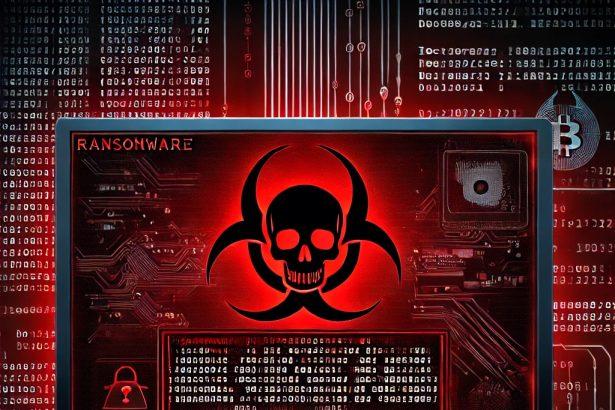Cybertron Ransomware is a dangerous strain of malware from the MedusaLocker family. First identified in August 2025, it encrypts victims’ files and threatens to leak stolen data unless a ransom is paid. This aggressive malware is primarily aimed at corporate networks and infrastructure.
Threat Overview
Cybertron is a ransomware type threat that uses RSA and AES encryption algorithms to lock data. It demands payment in exchange for decryption and claims to leak stolen information if the victim refuses to cooperate.
Summary
| Field | Details |
|---|---|
| Threat type | Ransomware (MedusaLocker family) |
| Encrypted file extension | Typically .cybertron18 (number may vary by variant) |
| Ransom note file name | DATA_RECOVERY.html |
| Associated email addresses | recovery2@salamati.vip, recovery2@amniyat.xyz |
| Detection names | Cybertron ransomware, MedusaLocker variant |
| Symptoms of infection | Encrypted files with new extension, altered wallpaper, ransom HTML note pop‑up |
| Damage & distribution | File encryption, data extortion; spread via phishing emails, trojans, cracked software, malvertising, and removable media |
| Danger level | High — targets corporate networks, encrypts files, threatens data leakage |
| Removal tool | SpyHunter (download here): SpyHunter Removal Tool |
Detailed Evaluation
How I Got Infected
Cybertron Ransomware typically infiltrates systems through deceptive phishing emails disguised as invoices, job applications, or internal documents. These emails often carry malicious attachments or embedded scripts. It can also spread through cracked software, infected USB drives, fake software updates, and malicious advertising.
What Does It Do
Once executed, the ransomware begins encrypting a wide range of file types using a combination of RSA and AES encryption. All affected files are renamed with a variant of the .cybertron extension, such as .cybertron18. The malware disables certain system functions, alters desktop wallpaper, and drops a ransom note titled DATA_RECOVERY.html.
The ransom note claims that the attackers have stolen sensitive data and threaten to leak it if payment is not made. Victims are instructed to contact the attackers through provided email addresses within 72 hours or risk an increased ransom fee.
Should You Be Worried for Your System?
Absolutely. Cybertron is a high-risk ransomware threat capable of inflicting severe data loss and reputational damage. It targets critical corporate files and employs tactics to increase pressure, including data exfiltration and extortion. There is no public decryptor available for this ransomware, and paying the ransom is both risky and strongly discouraged.
Ransom Note Text
Here is an excerpt from the DATA_RECOVERY.html ransom note left by Cybertron Ransomware:
“YOUR COMPANY NETWORK HAS BEEN PENETRATED… Your files are safe! Only modified.(RSA+AES)… No software available on internet can help you… Contact us for price and get decryption software… email: recovery2@salamati.vip / recovery2@amniyat.xyz… IF YOU DON’T CONTACT US WITHIN 72 HOURS, PRICE WILL BE HIGHER.”
Manual Ransomware Removal Guide
Warning: Manual removal is complex and risky. If not done correctly, it can lead to data loss or incomplete removal of ransomware. Only follow this method if you are an advanced user. If unsure, proceed with Method 2 (SpyHunter Removal Guide).
Step 1: Disconnect from the Internet
- Unplug your Ethernet cable or disconnect Wi-Fi immediately to prevent further communication with the ransomware’s command and control (C2) servers.
Step 2: Boot into Safe Mode
For Windows Users:
- For Windows 10, 11:
- Press Windows + R, type
msconfig, and hit Enter. - Go to the Boot tab.
- Check Safe boot and select Network.
- Click Apply and OK, then restart your PC.
- Press Windows + R, type
- For Windows 7, 8:
- Restart your PC and press F8 repeatedly before Windows loads.
- Select Safe Mode with Networking and press Enter.
For Mac Users:
- Restart your Mac and immediately press and hold the Shift key.
- Release the key once you see the Apple logo.
- Your Mac will start in Safe Mode.
Step 3: Locate and Terminate Malicious Processes
For Windows Users:
- Press Ctrl + Shift + Esc to open Task Manager.
- Look for suspicious processes (e.g., unknown names, high CPU usage, or random letters).
- Right-click on the process and select End Task.
For Mac Users:
- Open Activity Monitor (Finder > Applications > Utilities > Activity Monitor).
- Look for unusual processes.
- Select the process and click Force Quit.
Step 4: Delete Malicious Files
For Windows Users:
- Press Windows + R, type
%temp%, and hit Enter. - Delete all files in the Temp folder.
- Navigate to:
C:\Users\[Your Username]\AppData\RoamingC:\Users\[Your Username]\AppData\LocalC:\Windows\System32
- Look for suspicious files related to the ransomware (random file names, recently modified) and delete them.
For Mac Users:
- Open Finder and go to Go > Go to Folder.
- Type
~/Library/Application Supportand delete suspicious folders. - Navigate to
~/Library/LaunchAgentsand remove unknown.plistfiles.
Step 5: Remove Ransomware from Registry or System Settings
For Windows Users:
Warning: Incorrect changes in the Registry Editor can damage your system. Proceed with caution.
- Press Windows + R, type
regedit, and hit Enter. - Navigate to:
HKEY_CURRENT_USER\SoftwareHKEY_LOCAL_MACHINE\Software
- Look for unfamiliar folders with random characters or ransomware-related names.
- Right-click and select Delete.
For Mac Users:
- Go to System Preferences > Users & Groups.
- Click on Login Items and remove any suspicious startup items.
- Navigate to
~/Library/Preferencesand remove malicious.plistfiles.
Step 6: Restore System Using System Restore (Windows) or Time Machine (Mac)
For Windows Users:
- Press Windows + R, type
rstrui, and hit Enter. - Click Next, choose a restore point before the infection, and follow the prompts to restore your system.
For Mac Users:
- Restart your Mac and hold Command + R to enter macOS Utilities.
- Select Restore from Time Machine Backup.
- Choose a backup prior to the ransomware infection and restore your system.
Step 7: Use a Decryption Tool (If Available)
- Visit No More Ransom (www.nomoreransom.org) and check if a decryption tool is available for your ransomware variant.
Step 8: Recover Files Using Backup
- If you have backups on an external drive or cloud storage, restore your files.
Automatic Ransomware Removal Using SpyHunter
If manual removal seems too risky or complicated, using a reliable anti-malware tool like SpyHunter is the best alternative.
Step 1: Download SpyHunter
Download SpyHunter from the official link: Download SpyHunter
Or follow the official installation instructions here:
SpyHunter Download Instructions
Step 2: Install SpyHunter
- Open the downloaded file (
SpyHunter-Installer.exe). - Follow the on-screen prompts to install the program.
- Once installed, launch SpyHunter.
Step 3: Perform a Full System Scan
- Click on Start Scan Now.
- SpyHunter will scan for ransomware and other malware.
- Wait for the scan to complete.
Step 4: Remove Detected Threats
- After the scan, SpyHunter will list all detected threats.
- Click Fix Threats to remove the ransomware.
Step 5: Use SpyHunter’s Malware HelpDesk (If Needed)
If you are dealing with a stubborn ransomware variant, SpyHunter’s Malware HelpDesk provides custom fixes to remove advanced threats.
Step 6: Restore Your Files
If your files are encrypted:
- Try No More Ransom (www.nomoreransom.org) for decryption tools.
- Restore from cloud storage or external backups.
Preventing Future Ransomware Attacks
- Keep backups on an external hard drive or cloud storage.
- Use SpyHunter to detect threats before they infect your system.
- Enable Windows Defender or a trusted antivirus program.
- Avoid suspicious emails, attachments, and links.
- Update Windows, macOS & software regularly.
Conclusion
Cybertron Ransomware poses a severe threat to business environments by encrypting sensitive files and leveraging stolen data for extortion. Its widespread infection vectors and aggressive tactics make it one of the more dangerous ransomware strains in circulation. Immediate action is required upon detection. For removal, use a trusted security tool like SpyHunter to prevent further system compromise.
Download SpyHunter here:
👉 SpyHunter Removal Tool




